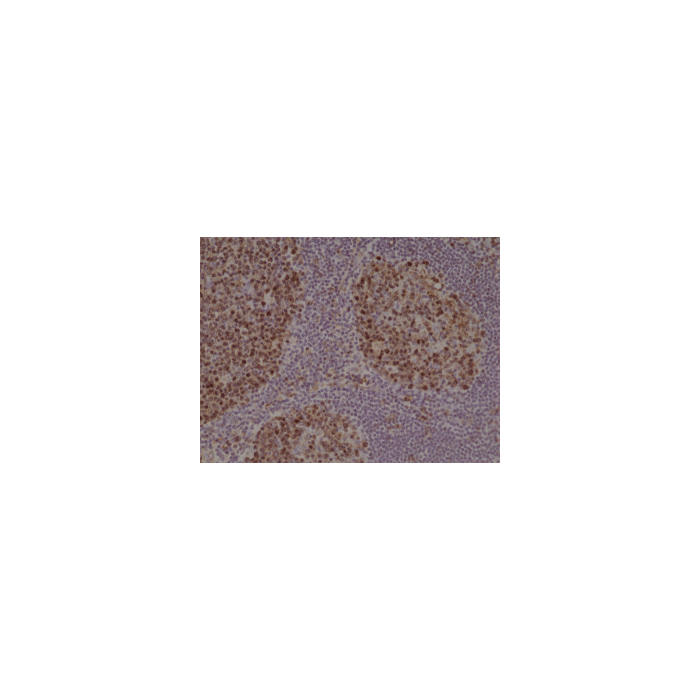Cookie Policy: This site uses cookies to improve your experience. You can find out more about our use of cookies in our Privacy Policy. By continuing to browse this site you agree to our use of cookies.
RevMab
anti-Stathmin (human), Rabbit Monoclonal (RM350)

| Product Details | |
|---|---|
| Synonyms | STMN1 |
| Product Type | Recombinant Antibody |
| Properties | |
| Clone | RM350 |
| Isotype | Rabbit IgG |
| Source/Host | Rabbit |
| Immunogen/Antigen | A peptide corresponding to the C-terminus of human Stathmin. |
| Application |
Immunohistochemistry (IHC): 1:500-1:1000 dilution |
| Crossreactivity | Human |
| Specificity |
This antibody reacts to human Stathmin. It may also react to mouse or rat Stathmin, as predicted by immunogen homology. |
| Purity | Protein A purified. |
| Purity Detail | Protein A affinity purified from an animal origin-free culture supernatant. |
| Concentration | N/A |
| Formulation | Liquid. 50% Glycerol/PBS with 1% BSA and 0.09% sodium azide. |
| Isotype Negative Control | |
| Other Product Data |
Click here for Original Manufacturer Product Datasheet |
| Accession Number | P16949 |
| Declaration | Manufactured by RevMab Biosciences. |
| Shipping and Handling | |
| Shipping | BLUE ICE |
| Long Term Storage | -20°C |
| Handling Advice | Avoid freeze/thaw cycles. |
| Use/Stability | Stable for at least 1 year after receipt when stored at -20°C. |
| Documents | |
| Product Specification Sheet | |
| Datasheet |
 Download PDF Download PDF |
Stathmin belongs to the stathmin family of genes. It encodes a ubiquitous cytosolic phosphoprotein proposed to function as an intracellular relay integrating regulatory signals of the cellular environment. Stathmin regulates microtubule dynamics by promoting depolymerization of microtubules and/or preventing polymerization of tubulin heterodimers. Upon entry into mitosis, microtubules polymerize to form the mitotic spindle, a cellular structure that is essential for accurate chromosome segregation and cell division. The microtubule-depolymerizing activity of stathmin is switched off at the onset of mitosis by phosphorylation to allow microtubule polymerization and assembly of the mitotic spindle. Phosphorylated stathmin has to be reactivated by dephosphorylation before cells exit mitosis and enter a new interphase. Stathmin is critically important for the formation of a normal mitotic spindle upon entry into mitosis and also for the regulation of the function of the mitotic spindle in the later stages of mitosis and for the timely exit from mitosis.





